Your IP address is your unique ID across the internet. Without it, no one would be able to send you the precious content you are looking for.
But most of the time, this ID (a public IP address) is dynamic and temporary. It changes every time you move, either physically or virtually.
You are getting a new IP address on your iPhone every time you change from mobile data to Wi-Fi and vice versa, switch to different internet providers or use three of the methods described in this post.
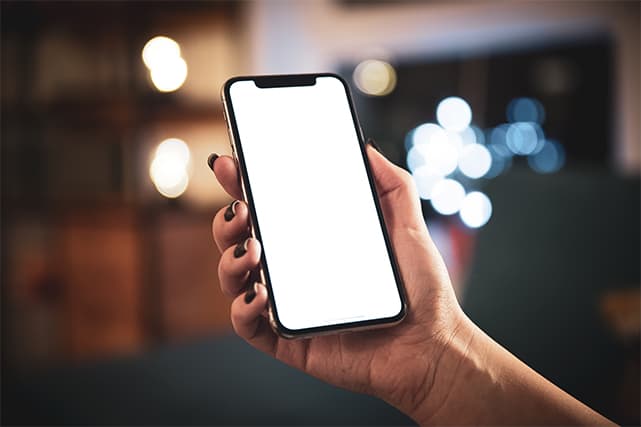
Table of Contents
Your Phone’s Public IP Address
There are two types of IP addresses: public and private IPs. We’ll explain why public IP addresses are important for your mobile device and how they change often. Private IP addresses are outside the scope of this article, as they aren’t used for the internet.
What’s Your Public IP?
When it comes to your iPhone, the public IP address is the unique ID used by your device to send and receive data online. Without a public IP address, you wouldn’t be able to use WhatsApp, Facebook or simply browse online. However, this “magical” public IP doesn’t belong to your iPhone device—rather, it’s assigned by higher authority devices, like a home router Wi-Fi setup or mobile broadband core gateway. Public IPs are usually assigned dynamically and temporarily using a protocol known as DHCP (Dynamic Host Configuration Protocol) and translated by NAT (network address translation).
Mobile broadband providers don’t assign a fixed IP to every single Wi-Fi router or device trying to connect to an online site or service. Otherwise, they would have run out of IPs a long time ago. Instead, they assign IPs dynamically and on-demand by looking into a pool of IPs, finding free IPs and reusing them. So, the next time you turn on your iPhone, you might be using a completely different public IP than before.
Running a quick query through our IP test tool or through the site whatismyIP.com throughout the day can show you the dynamic nature of your IP address.
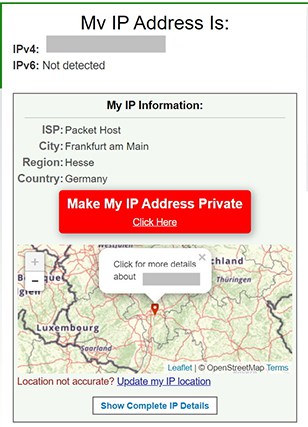
The Simple Method
To understand the concept above, let’s use the following scenario:
While at home, you might be connecting your iPhone to your Wi-Fi network and have the mobile data (4G/LTE) off. Obviously, this is a good idea if you want to save those precious gigabytes while watching Netflix on your iPhone. At home with your Wi-Fi network and router, you’re probably using a particular internet service provider (ISP) and, therefore, a unique public IP. Then, you go out, and your iPhone changes to the 4G mobile broadband connection—again, a completely different network with a unique IP and data points.
In this case, your iPhone is using two different public IP addresses and probably more, thanks to the technology used by mobile carriers known as carrier-grade NAT.
That being said, the simplest way to change your IP (or use another IP that can’t be mapped to you) is to turn off the mobile data access and go to your closest coffee shop with Wi-Fi network connections. But there are issues that come with this: You put your privacy and security at risk using an unsecured Wi-Fi network.
Why Would You Want To Change Your IP Address?
Your public IP is something that, by different circumstances, might already be dynamic. Your iOS device could be using a handful of different public IP addresses daily, and you probably don’t know about it. Again, using the What Is My IP? website to monitor your IP addresses is always a good idea.
But still, there are ways to manually enforce and guarantee a new IP address. And, you probably landed here because you’re either concerned with your privacy and security, or you might just want to access geo-restricted Netflix libraries that are exclusive to users in certain countries.
Reasons to Change Your IP
Changing your IP address helps you protect your identity and remain anonymous at your destination—which could be a web server, a torrent swarm or any service that uses your public IP address to talk back to you.
Changing your iPhone’s IP and using encryption improves the security of your traffic data and other information.
Changing your IP address can bypass either a country-wide firewall or a Content Delivery Network (CDN) that restricts access to certain content, based on a range of IPs or IP blacklists.
Methods to Change Your IP Address
There are various methods you can use to change your IP address. Which one you use depends on your requirements and resources. People change their IPs for a variety of reasons, from privacy protection to censorship circumvention to avoiding advertisers who want to build a profile on them.
An Example:
As shown in the diagram below, if your iPhone (client) connects to a website (www) via a VPN server (server), your original IP will be traceable for the infrastructure forwarding your traffic. This means your local ISP or government can map site traffic flows back to the source (you) using logs.
The idea of using an exit node, such as a VPN server, proxy or Tor exit relay, is to mask your IP address and forward traffic with its own IP. If the server is removing your traffic logs, nobody can trace them back to (source) you.

For any method that changes the public IP address of your iOS device, you’ll still be using your original IP address as an identity to reach that remote server (VPN, proxy or Tor). That means your IP source address will be traceable to whoever owns or manages your internet access, such as your internet service provider.
The following methods let you use someone else’s IP to mask your own. For privacy and protection, you can leverage encryption and ensure they aren’t keeping your traffic logs.
How to Change IP Address on iPhone: 3 Simple Ways
Use a VPN
A virtual private network (or VPN) is the easiest and most secure way to change the IP address of your iPhone. A VPN lets you use the IP of a server as an online exit node while encrypting all your traffic and ensuring traffic privacy via no-logs policies. Additionally, the best VPNs have extensive worldwide networks, so you can choose any server physically located in a city/country and use its IP address to browse online.
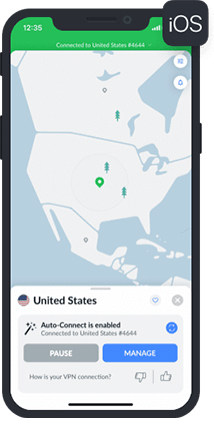
Here’s how to change the IP address on your iOS device with a VPN:
- Get a VPN that supports iOS. Some products are more suitable for iPhone devices than a PC computer; see our list of options here.
- Open the Apple App Store menu and search for VPN provider options, like NordVPN or ExpressVPN. Download/install the client.
- Open the app information icon. Sign up and log in to your account with your username, email address, password and other account information.
In the following NordVPN screenshot, you can see the map of Europe with blue icons. This shows the available geographic spots/categories you can connect to with NordVPN. For example, when you connect to a Norway server, you’ll get a Norwegian IP address, and most likely, content tailored for the Norwegian audiences.
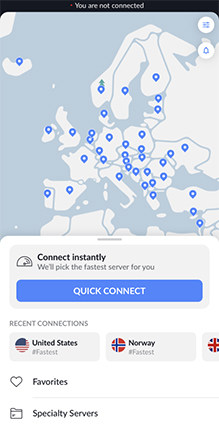
Use a Proxy
Another way to change the IP address on your iPhone is to use a proxy. Proxies are different from VPNs—they’re much cheaper and provide much more flexibility. Cheaper because they don’t require the infrastructure the VPNs do, and more flexible because they work at a different OSI layer (layer 5 to 7). But these also make proxies less secure, as they don’t provide encryption.
Still, when you send your traffic via a proxy, your original IP address is masked with the proxy’s IP. In other words, it’s similar to using a VPN server but without encryption.
To change the IP address on your iPhone with a proxy:
- Find a safe and secure proxy IP provider (avoid free proxies at all costs). Look for IPv6 proxies because they’re safer and fresher than IPv4s. A benefit of proxies is that you don’t need any software, only information.
- Once you get the IP address of the proxy server and the port number (443 for HTTPS, for example), open your phone and go to the Settings menu.
- Go to your Wi-Fi network settings menu to access the proxy settings of your phone. Tap on the name of the Wi-Fi network and scroll down the Wi-Fi settings menu until you find the HTTP proxy server. You can also change proxy IP settings for mobile data.
- Enable proxy to manually configure the proxy settings, including IP (or hostname), port and authentication (if required).
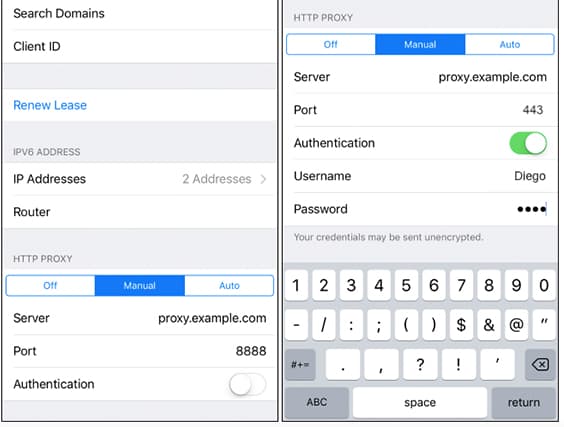
This is important:
It’s recommended to use a proxy for activities requiring speed, like P2P file-sharing or unblocking geo-restricted content, but not for sending sensitive account information like the username and password for your bank account.Also, note that a proxy changes your IP address for specific applications or services, not your entire online connection (as VPNs do in L3). So you might be using the proxy’s IP for some web applications and your original IP for others.
Use the Tor ‘Onion’ Browser
Tor is a free and open-source software program designed to provide anonymity while browsing online. In the words of the Tor Project, the software defends against tracking and surveillance and allows users to circumvent censorship.
Note:
Tor uses a worldwide volunteer network overlay of thousands of relays to help hide a user’s original location. It’s ideal for concealing your identity and information from anyone, including organizations, governments or ISPs conducting network surveillance and traffic inspection.To change your IP address on your iPhone using Tor:
- Go to the Apple App Store and find Onion Browser for iOS.
- Download and install it.
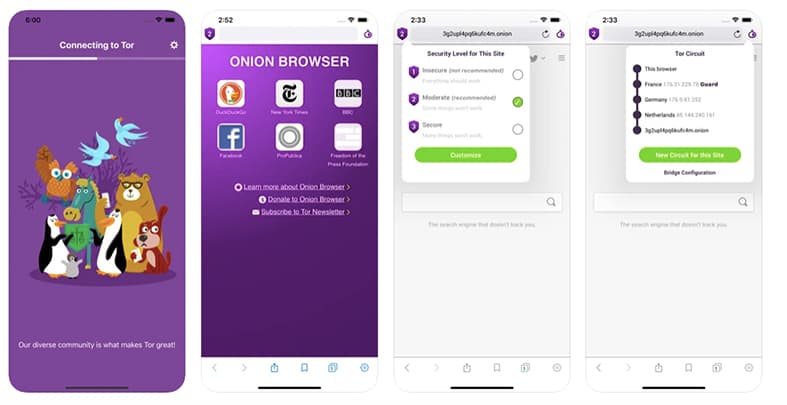
Final Words
The easiest way to change your iPhone’s IP address is to use someone else’s Wi-Fi access while you have the mobile radio off. But if you insist on using the mobile radio (4G/LTE), most mobile carriers today dynamically assign and reuse IPv4 addresses to all their mobile users. So, it’s very likely that your IP today will not be the same as tomorrow.
But still, if you want to enforce a new IP address on your iPhone, use a VPN service, a proxy or the Tor browser. And don’t forget to test your new IP before and after to avoid a connectivity issue.

